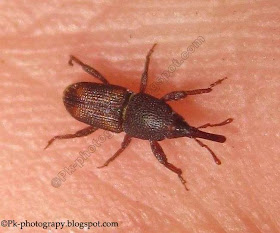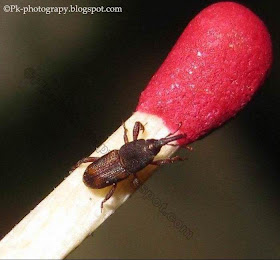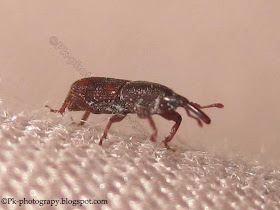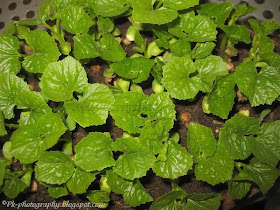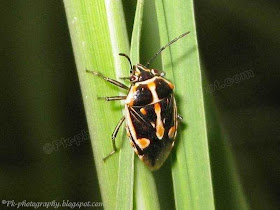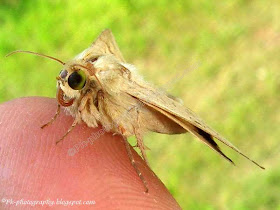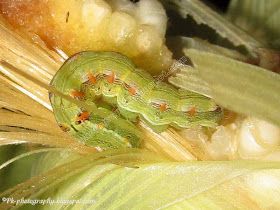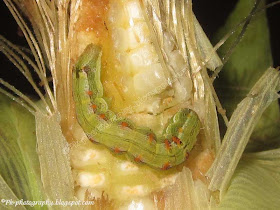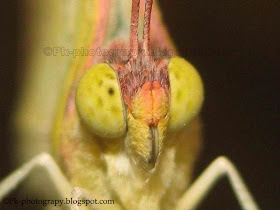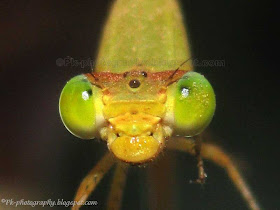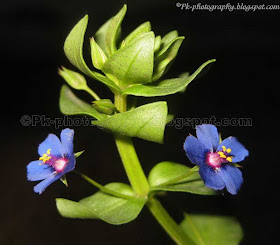A photography blog that focus on Pakistan natural beauty, people, culture heritage, customs and traditions, historical places, travel destinations, wildlife: flora and fauna.
Pages
▼
Bitter Melon Seedlings
Bitter Melon or Bitter Gourd (Momordica charantia) seeds require 25-30 centigrade temperature for proper germination in the field. In cold weather, it cannot be grown directly from seed. So it's better to germinate the seeds in a small pot or plastic bag full of organic fertilizer. For best and quick germination the pot or plastic bag should be moved to a hotter location.
Bitter meon is known as Karela (کريلا) in domestic languages Urdu and Pashto.
Bitter meon is known as Karela (کريلا) in domestic languages Urdu and Pashto.
Bitter Melon Seedlings
Indian Red Admiral Butterfly
The Indian Red Admiral or Asian Red Admiral (Vanessa indica) is a medium sized butterfly (wingspan: 55-65mm) in the family Nymphalidae (Brush-footed Butterflies), subfamily Nymphalinae. The upper side of fore wing is dark-brown with red/orange markings and white spots near the apex. The under side of fore wing is very similar to upperside with three transverse blue spots beyond the cell. The upper side of hind wing is golden brown with marginal red/orange band having small black spots in the center. The underside of hind wing is mottled with different shade of brown. It's some time confused with its close relative, Painted Lady.

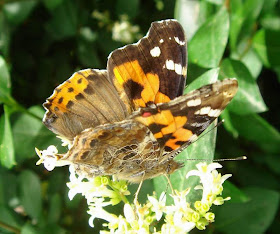
Indian Red Admiral Butterfly


Painted Bug
The Painted Bug (Bagrada hilaris), also known as Bagrada Bug, belong to family Pentatomidae (Stink Bugs). They are black with orange and white spots and markings. They are potential pest of the plants in the family Brassicaceae. The life cycle of Painted bug consists of three stages i.e. eggs, nymphs and adult painted bugs.
Painted Bug
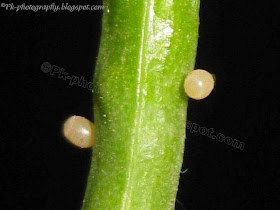 |
| Painted Bug Eggs |
 |
| Painted Bug Nymphs |
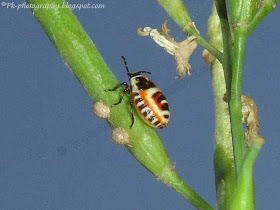 |
| Painted Bug Nymphs |
Rounded Pierrot-Tarucus Nara
The Rounded Pierrot (Tarucus nara) also known as Rusty Pierrot or Striped Pierrot is a small butterfly (wingspan: 24 - 28 mm) found in Asia that belongs to the family Lycaenidae (Blues family). The lower side of the wings is white with black spots, strips and border. The upper side is violet blue with narrow black border. They have a short tail on each hind wing.
Rounded Pierrot (Tarucus Nara) Butterfly
Rounded Pierrot (Tarucus Nara) (Open Wings)
Corn Earworm Moth
The Corn Earworm Moth (Helicoverpa zea) is also known as cotton bollworm moth or tomato fruitworm moth, sorghum headworm moth or vetchworm moth, depending on the host plant its larva consume. They are medium sized moth (35 to 45 mm wingspan) belong to family Noctuidae. Though they are variable in color, but generally the forewings are yellowish brown in color having a small dark spot in the center and gray color broad margin. The hindwings are creamy white with broad blackish distally margin and having a small dark spot in the center. In summer moths particularly at the time of sunset, they can be seen in large number sucking nectar from a variety of available flowers. Their larva is an agricultural pest of economic significant, which feed on a variety of agriculture crops like corn, cotton, soybean, sunflower, tobacco, vetch and tomato etc.

![]()
Corn Earworm Moth

Corn Earworm
Bug Eyes
This is not a scientific article about bugs/insects eyes, but a post to admire the beauty of bugs eyes and to admire their creator. "Bug eyes" terminology is also used for human eyes, that are bulged out. People with bugs eyes may be look some how scary, but as regard bugs their protrude eyes are not only look suitable with them, but also look attractive and beautiful. The first picture which I took today show the eyes of a damselfly. The other are from my stock photos. The second picture shows the eyes of a buttery, while the third picture is of an hoverfly with spotted-eyes. The fourth and fifth pictures are of dragonfly and preying mantis eyes respectively. I know, me and my camera didn't do justice in taking these pictures, but still I decided to share them with you.
Bug Eyes
Higher Secondary School Zaida Swabi
These pictures are taken at the front lawn of Higher Secondary School For Boys Zaida Swabi, NWFP. After looking at scattered, fallen and empty flower Pots, weed in flower beds and in the lawn, no body will believe that this a school building, yes a school building, where more than two hundred (200) students of 1st year and 2nd Year (Years 11-12) are studying currently. Moreover these pictures are not taken on the first day of the session, but in the last month of session (March). My purpose of this post is to request to Mr. Sadar Hussain Babak Minister of Education NWFP, Mr. Sikandar Irfan MPA PF-35 Swabi-5, Secretary Education NWFP, Directer Education NWFP, Executive District Officer Education Swabi and all other concerned to look into this matter and take necessary action for the solution of the problem.





Higher Secondary School Zaida Swabi





Scarlet Pimpernel Flowers
The Scarlet pimpernel (Anagallis arvensis) is a low-growing annual plant in family Myrsinaceae. This is a weed (unwanted plant) that grow along field sides and even in wheat crop. They have tiny flowers with a 6-7 mm diameter and 5 petals. The flower can be red, orange or blue with a dark purplish center. The flowers are light sensitive that open in sunlight and fold up in the dark. Their common names include blue pimpernel, red pimpernel, poorman's barometer, shepherd's weather glass or shepherd's clock. Locally it's known as Mangota or udigulay. In NWFP both blue and red species of Scarlet pimpernel grow. The blue species grow in plain areas, while the red or orange species grow in hilly areas.
Scarlet Pimpernel Flowers



